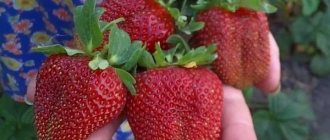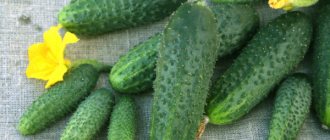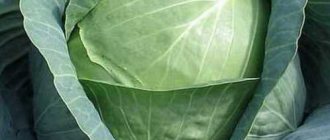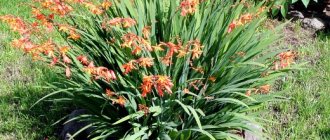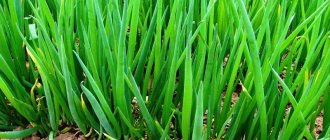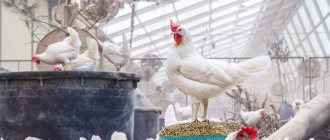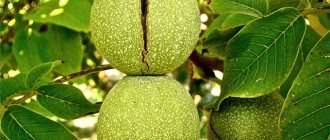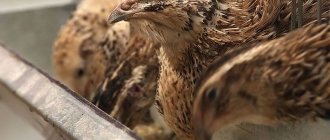After reading the description of the White Swede strawberry variety, many gardeners will learn about another medium-ripening crop. This strawberry stands out among other plants due to the color of the berries. They are completely light. Gardeners all over the world are just beginning to get acquainted with the White Swede strawberry, and not everyone knows the intricacies of growing and caring for it.
Description of the variety and photo
This variety is resistant to low air temperatures and drought. The plant is very hardy and strong: it practically does not get sick, pests avoid it.
This berry is especially recommended for people suffering from allergies to red pigment. In this case it does not exist, so it will not arise. A person will be able to enjoy strawberries and desserts made from them without fear for their health.
This variety is also suitable:
- with dietary nutrition;
- during pregnancy;
- it is often added to sweet dishes for children.
In the first year the harvest is not very rich, but in the second year you can expect a lot of berries. Up to 8 peduncles can form on the bush, on which whole clusters of large white berries will ripen.
Important! The bushes are compact and do not take up much space in the garden bed. The leaves are vertically oriented and have a dark green tint. Whiskers formation is moderate. The variety is very aromatic, the smell is strawberry and pleasant. It is especially noticeable during ripening.
Interesting facts about strawberries
- Berries help with headaches.
- The immune system will be strengthened for a whole year by eating strawberries daily in the summer.
- You can remove age spots and freckles with strawberry juice.
- Baths with strawberry juice will make your skin silky and soft (the fruit contains copper, which promotes collagen production).
- Strawberry is an excellent aphrodisiac.
- Unusual and tasty dishes are obtained by combining strawberries with poultry, cheeses and seafood.
- Deep-fried strawberries with pepper are one of the most expensive dishes served in New Orleans restaurants.
- Only strawberries have seeds on the outside of the fruit.
Characteristics of the berry
They have the following characteristics:
- large, very beautiful in appearance;
- white with a light pink side;
- they have a regular conical shape;
- average weight is 20-30 g.
If the gardener takes good care of it, regularly removes weeds, and waters the bushes, the berries can grow quite large. There are cases when these fruits reached 40-55 g. The more work invested, the richer the harvest awaits.
Due to their white color, the berries do not attract the attention of birds, so they will not be pecked and will remain unharmed in the garden.
Peculiarity! The pulp is tender, the taste is sweet and sour, not cloying. The strawberry aroma has hints of pineapple or mulberry. They are considered to be ripe when dark red small seeds appear on their surface.
Reproduction
Gardeners use mustaches to propagate such strawberries. The plant produces them in sufficient quantities. The seedling method is also used, when strawberries are grown from seeds.
For this purpose, the seeds are planted in February-March. They are watered regularly and the condition of the soil is monitored, so in a few weeks the first shoots may appear.
You can also propagate in vitro using strawberry cells, but this method is quite complicated and requires special equipment.
Landing
Planting is carried out in the spring. You must first select a suitable location for the plant. It should be in a lit area.
The soil should be:
- fertile;
- loose;
- not too wet.
It’s great if the soil has a high level of breathability. Then the strawberries will grow better and ripen faster. It is worth remembering that salts are destructive for this variety, so soil with such a component should not be chosen.
When planting, moisten slightly. The “heart” should remain on the surface; it should not be sprinkled with earth. The holes should be wide and of medium depth. Ten seedlings are planted per square meter. There should be at least 15-20 cm between the bushes. After planting, the seedlings are watered abundantly.
Features of planting in the ground
The optimal time for planting garden strawberries in a permanent place in open ground is spring. Well-lit areas without waterlogging and shading are suitable for the White Swede variety. The soil should be loose, fertile, neutral, with a high level of breathability.
Garden strawberries grow and bear fruit poorly on soils with a significant salt content. For this reason, it is better to apply chemical fertilizers to the soil no later than a couple of weeks before planting the plants in a permanent place. A month before planting, you should dig up the soil, mulch and apply basic organic fertilizers. If the soil was not fertilized in the autumn, it is recommended to add rotted manure, humus and wood ash to the planting holes.
Strawberry bushes "White Swede" are very compact, their average height is 15-20 cm, so the optimal planting density is ten seedlings per square meter. In a pre-marked row, fairly large planting holes are dug, relatively deep and wide, at a distance of no more than 20 cm from each other. The soil in the holes should be sufficiently moist. When planting, you need to ensure that the “heart” (growth point) remains on the surface. After planting, the plants are watered abundantly with warm water, and the soil around the strawberry bushes is mulched with sawdust, hay or a special breathable non-woven material.
Watering
These strawberries are watered often, but in moderation. Usually they focus on the condition of the soil. If it is dry, you should immediately moisturize it. During the rainy season, you should refrain from watering. At first, the plant is watered 1-2 times a day; after a month or more, the strawberries are watered once every 3-4 days.
Do not moisten the soil too much, this is detrimental to the plant. The water should be warm. It is better if the gardener uses drip irrigation: it allows you to moisten the soil, but does not lead to the accumulation of a large amount of liquid.
Strawberry or strawberry?
Confusion in the names of these plants occurs quite often. Let's figure out how it differs from strawberries.
First of all, it should be said that both plants belong to the genus Strawberry and belong to the Rosaceae family. But that's where their similarities end. And then we will look for differences.
- The stem of strawberry can reach a height of 32 cm, strawberry - 25 cm.
- Strawberry inflorescences are bisexual, strawberries are unisexual.
- Strawberries have light green corrugated leaves, strawberries have darker leaves, and the veins are not so intense.
- Strawberry flower stalks are much shorter than strawberry ones.
- And the last difference between wild strawberries and wild strawberries is the high yield of the former, despite the fact that they will grow in the same conditions.
Care and feeding
Care includes:
- regular watering;
- mulching;
- fertilizing with organic fertilizers.
In addition to frequent watering, the plant should be mulched. It is enough to carry out the procedure once every 2-3 weeks as needed. It all depends on the condition of the soil.
Important! Strawberries are fed with various fertilizers. You can purchase ready-made solutions in the store, or dilute them yourself. Once every 1-2 weeks is enough. Wood ash, humus, and rotted manure should be used as fertilizer. Usually these components are diluted with water in a ratio of 1:10.
White-fruited strawberries: how to grow
In terms of their agricultural technology, white varieties are practically no different from ordinary strawberries. It is cultivated both in open ground and in greenhouse conditions. Some gardeners plant white-fruited varieties in containers.
White strawberries tolerate shading relatively calmly, and are also not too demanding of abundant watering. If there is too much moisture, the fruits will be watery. However, the berry will retain its bright taste.
Strawberries reproduce exclusively with the help of tendrils; the seed method is not suitable here. To do this, root the tendrils in a plastic container and then separate them from the bush.
Where and how to plant
White strawberries prefer warm weather conditions, so the best solution would be to plant them in greenhouses. But in a good warm climate, open ground is also suitable. Good predecessors of white garden strawberries will be corn, as well as the legume family. A plot where potatoes, tomatoes or cucumbers were previously grown will not work.
Before planting seedlings, you need to remove all weeds and roots. Dig up the soil to a depth of approximately thirty to thirty-five centimeters and feed the soil with minerals (potassium, nitrogen and phosphorus-containing fertilizers are suitable). Planting holes should be about ten to fifteen centimeters deep. Sprinkle them with water a little, and then, straightening the root system of the plants, place them in the holes. The distance between plants should be twenty to twenty-five centimeters. This is necessary for the bushes to grow correctly.
Seasonal care
Bushes need to be pruned every season. Once a year will be enough. Aged foliage and tendrils will take a lot of nutrients away from your strawberries, thereby reducing the quality and quantity of your harvest. Pruning can be done in the spring or in the autumn.
For the winter you need to cover your white strawberries. In this case, it is necessary to prune the bushes in the fall, and also remove the tendrils. Also make sure there are not too many mustaches. In the summer, the leaves that are at the bottom “work” the most. Therefore, it is them that should be cut off subsequently. This must be done carefully so as not to damage the upper foliage. It already has buds for next year.
Since you have trimmed the strawberry tendrils and leaves, your plants are not afraid of various harmful insects and diseases. If for some reason you did not prune the plant in the fall, then be sure to correct this situation in the spring. Don’t forget to remove damaged, yellow and aged leaves.
Diseases and pests
The plant practically does not get sick. If the disease does occur, it is only in rare cases, due to the carelessness of the gardener.
Dangerous for this variety:
- gray rot;
- powdery mildew;
- white spotting.
Nematodes, strawberry mites, and weevils can cause harm. To prevent the development of diseases and repel pests, bushes are treated with special solutions. A solution of potassium permanganate is suitable. It is diluted with water in a ratio of 1:10. It should be light pink. It is enough to spray once every two weeks.
Attention! You can use ready-made Trichodermin and Guapsin. Before using them, you should read the instructions. Such solutions are applied to bushes and leaves. They are very effective, but you should not use them too often: 1-2 times a month.
Strawberry White Swede: distinctive features of the variety
The White Swede strawberry variety differs from the others in the special color of its berries - they are entirely white.
The hypoallergenic strawberry variety White Swede is suitable for people with allergies, dieters and expectant mothers. The berries of this variety are often used as an additive to baby food. Strawberries grow well in the middle zone, as well as in the climate of Siberia and the Urals.
Berries contain a large amount of various vitamins and amino acids. Also present are plant acids, mineral compounds and ficetin as a powerful antioxidant. The White Swede ranks high in potassium and fiber content.
Reviews from gardeners
Elena: “I’ve been working with this variety for a long time. I like its unusual color, taste and aroma. Usually, planting and growing do not require special care; it is enough to be extremely careful and not break certain rules. I never water too much. I use humus as a top dressing. As a rule, after such fertilizer the plant grows faster. Overall very satisfied. I have never regretted my choice!”
Julia: “I am a gardener with extensive experience. I grew a lot of berries, for me it is not difficult. However, at first it was a little difficult: I had to look for the most comfortable area for the plant and select suitable fertilizers. I resolved the difficulties over time and gained experience. Now I'm excited to grow these strawberries. It’s delicious, I even like the slightly sour tint. I recommend it to everyone!”
Marina: “I always loved experimenting with varieties, tried to try new types. Strawberry White Swede attracted me with its appearance. I chose it, grew it in the garden, and was very glad that I had it. The process wasn't too difficult for me. I was pleased that the taste was not tart or sour.”
This berry has an unsurpassed taste and aroma. Her unusual appearance immediately attracts attention. This variety is excellent for making desserts, preserves, and jam.
Bottom line
Strawberries of the White Swede variety are a very beautiful, juicy and aromatic crop with an unusual color and attractive pineapple aroma. Thanks to its many positive characteristics, you can be absolutely sure that very soon this snow-white beauty will win the hearts of gardeners and farmers in our country.
The productivity level of the White Swede strawberry is quite high that it cannot but attract even more attention. Unpretentiousness in care is another important factor due to which it is worth giving preference to this culture.
Due to its high level of resistance to frost, additional covers for the beds are not required; simply sprinkle them with a layer of snow. Due to the high level of transportation and keeping quality, White Swede strawberries can be easily grown for commercial purposes.
